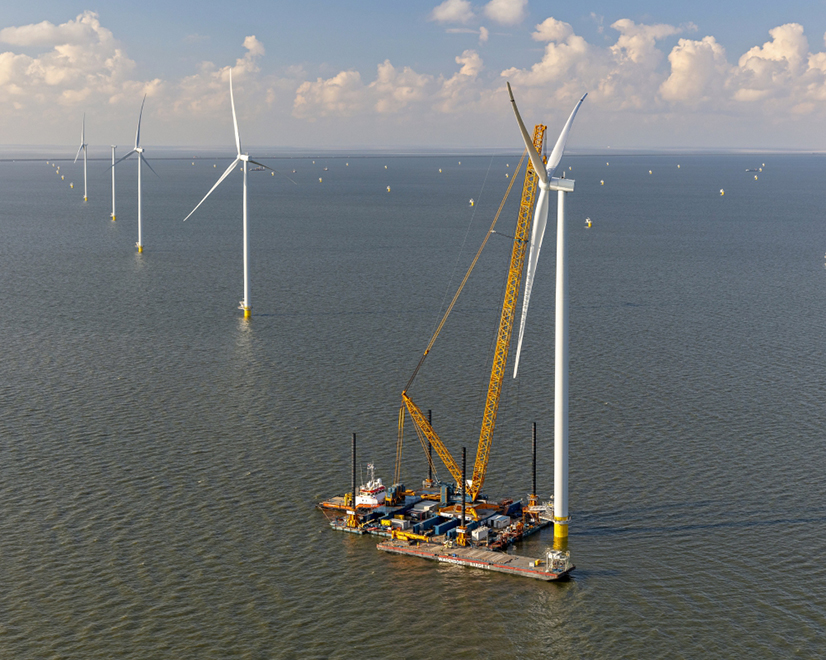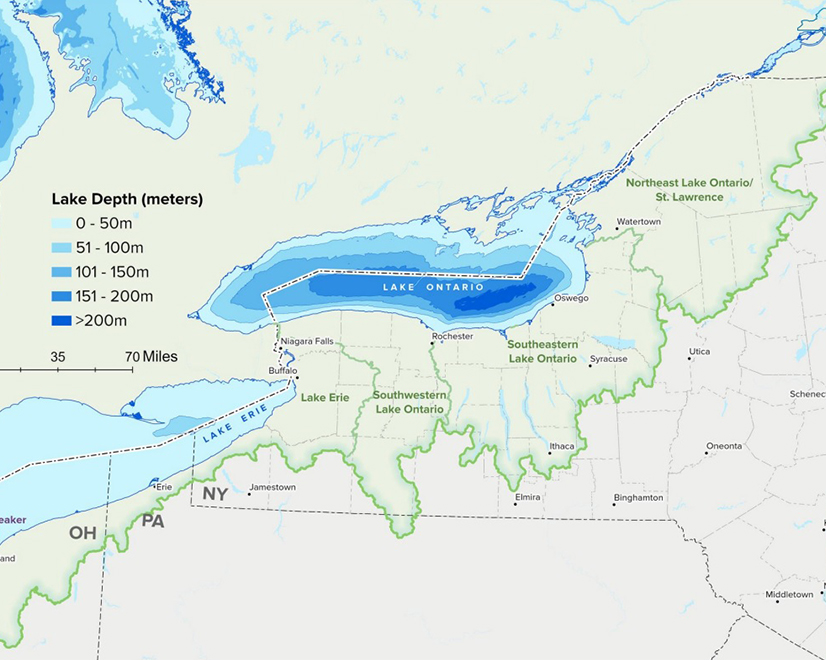
Lake infrastructure, supply chains, viewshed and airspace considerations all point to an ideal turbine size of 6 MW for Great Lakes wind development, according to Walt Musial, manager of offshore wind at the U.S. Department of Energy’s National Renewable Energy Laboratory (NREL).
“Probably the biggest determining factor in what kind of turbines could be feasible in the Great Lakes is the limitations and constraints on vessels and how big of a vessel can come through the locks on the St. Lawrence [River],” Musial said Tuesday during a public webinar on New York’s Great Lakes wind power feasibility study.
Vessels would have to enter the Gulf of St. Lawrence from the Atlantic Ocean and pass through the channels and locks that make up the St. Lawrence Seaway to enter Lake Ontario.
NREL’s survey of traditional vessels that are performing offshore wind project installations found that those vessels are too big for the seaway system, Musial said.
As an alternative, NREL is looking at the custom design of a heavy-lift barge used for building the Windpark Fryslan in an inland bay in the Netherlands, where shallow waters prohibit passage of traditional installation vessels.
“You take several large barges that can fit through the locks or can be built on the lakes and assemble them by fastening them together and then moving a large crane onto that platform,” Musial said.
The size of the barge and the port capabilities in the area will limit the wind turbine sizes that developers could use for projects on the lakes.
GE’s 12-MW to 14-MW Haliade X wind turbine, which offshore wind developers on the U.S. East Coast plan to use, will be too big to put on the lakes, Musial said.

Instead, GE’s 6-MW Cypress wind turbine would be ideal, he said. It’s comparable to the GE 6-MW Haliade 150 wind turbines used for the Block Island Wind Farm. The Cypress has a 164-meter rotor diameter and maximum hub height of 167 meters. By comparison, the 12 MW Haliade X has a 220-meter rotor diameter and 248-meter hub height.
“There’s probably a dozen different turbine types that could be used, that would be big enough to achieve the economics we need, but small enough to meet the requirements and the limitations of the lake infrastructure,” he said.
The supply chain for 5-MW to 6-MW turbines, he added, will be easier for developers to access than offshore turbine supply chains. And the smaller size turbines will better accommodate viewsheds and regulated airspace for the lakes.
At 6-MW, he said, one wind turbine can produce enough energy in a year to power 2,800 New York homes.
Musial, along with representatives of Brattle Group and Advisian Worley Group, presented initial findings to the public on Tuesday for the ongoing feasibility study.
Last fall, the New York Public Service Commission directed the New York State Energy Research and Development Authority (NYSERDA) to identify the viability of Great Lakes wind energy as a resource. (See NY Kicks Off ‘Dynamic’ Great Lakes Wind Study.)
Final results of the study are expected by the end of the year or early next year, said Sherryll Huber, project manager for offshore wind contracts at NYSERDA. The study scope includes Lake Erie, Lake Ontario and New York communities along the shorelines.
Regulators will use the study to determine next steps, which Huber said could include no further action, directing procurement of full wind projects or commissioning an additional study or a pilot project.
Permitting Pathways
Great Lakes wind projects would have unique permitting structures compared with the regulatory environment for projects sited in the Atlantic Ocean, according to initial findings for the study from Advisian.
“Under the Submerged Lands Act, all of the waters of the Great Lakes that are between the New York coastline and the international boundary with Canada are the territorial waters of the state of New York,” Andrew Krieger, offshore wind energy specialist at Advisian, said during the meeting. In addition, the lands under territorial waters are state property.
Some of the projects could abut the border with Canada, requiring consideration of existing agreements at the national and state levels, Krieger said.
Advisian has identified 14 major federal and state consultations, permits and authorizations that would be necessary to build a Great Lakes wind project. In addition to considerations for protected species, vessel navigation and airspace, for example, Krieger said New York would have to issue an easement for the submerged land in the lakes.
There also will be several permitting pathways for projects, depending on project size or funding structure. In New York, for example, larger projects might trigger expedited review under the state’s new 94-C review process. And at the federal level, various agencies might lead National Environmental Policy Act review based on whether the federal government is funding a project.
Advisian will include a permitting chart in the final study to show integration points between the different federal agencies, information flows between developers and authorizing entities, and opportunities for public participation.

